interview by Anne-Marie Strohman
I was lucky enough to meet Emma Kress during my time at Vermont College of Fine Arts. (We both graduated with MFAs in Writing for Children and Young Adults in July 2020.) I first heard Emma read from a chapter-book-in-progress, and her voice blew me away. Emma’s writing as such attention to detail, such personality, such emotional resonance. She can write funny and serious–sometimes in the same sentence. Emma’s debut YA novel, DANGEROUS PLAY comes out August 3, and I’m so glad we get a peek into Emma’s brain and writing process. I highly recommend both DANGEROUS PLAY and Emma herself. –Anne-Marie
What inspired you to write DANGEROUS PLAY?
This team of fierce, hyper-athletic, determined girls showed up when I was in the middle of writing something else. I told them to go away, but they didn’t listen. Even though they showed up sudden and loud, I had been thinking about some of book’s components. For instance, I’d long noticed a gap in YA literature. While there were powerful books that followed a survivor’s journey, I didn’t see any books about overall rape culture. I’d also never seen a book about girls’ sports and the kinds of friendships that can happen on an intense, competitive girls’ team. I started writing Dangerous Play back in 2014. Thankfully, now there are books like Moxie, which address rape culture. And while there are more books featuring athletic girls (like 2021 debuts In the Same Boat, by Holly Green, and The Knockout, by Sajni Patel) there are few that feature full teams. As a result, I was thrilled when the girls of Dangerous Play showed up, filling a need I’d had for a long time. In many ways, this was the book I needed both when I was a teen, and as an adult. [Editor’s note: Emma talks girls’ sports books on the Hey YA podcast.]
There’s so much about this book that’s serious, so much that’s tender, so much that’s funny. How did you settle on a voice and tone for the book?
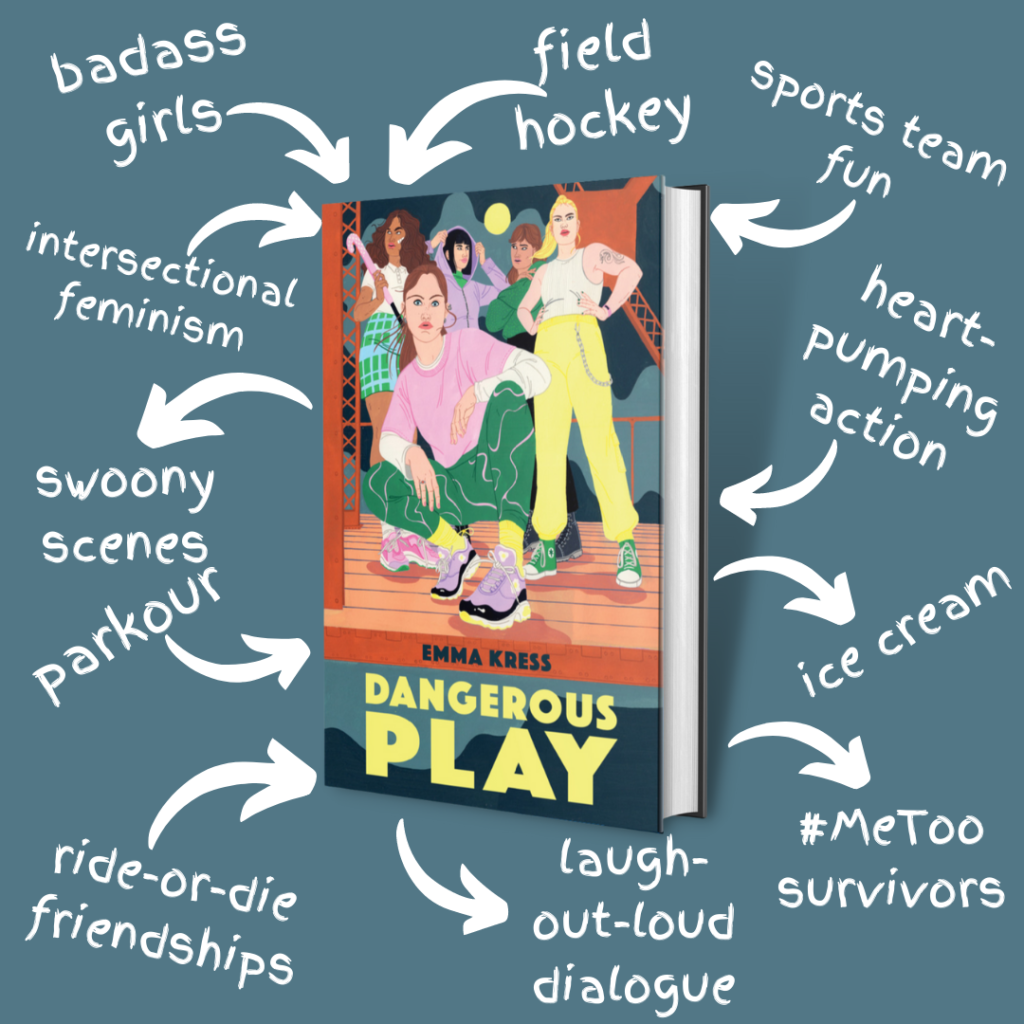
Thank you! It was a tough juggling act. This is also an interesting question because the tone for the book changed over the course of writing. When I began the book back in 2014, the tone was lighter and campier. Then, the world changed. In 2017, the #MeToo movement shifted the way we see survivors and talk about sexual assault. It was no longer my job to inform people of rape culture or package it in a palatable, understandable way. As a result, my tone got grittier. That said, I love me my romance; I love me my comedy. In my conversations with my closest friends, we might laugh, cry, and get mad at the world—all within an hour. With our best friends, we can be serious and silly, tender and angry. I wanted this book to feel like those kinds of friendships. I wanted the reader to feel invited into the powerful and uplifting friendships these girls have. I wanted the reader to feel a part of the team.
With a full field hockey team, some parents, love interests, competitors, allies, antagonists, this book has a very large cast. How did you approach and manage so many characters?
Oh my gosh, this 26+ cast nearly killed me. I don’t recommend it! I worked on Dangerous Play for years, so all of the characters felt very fully developed to me. I used all kinds of tricks to develop them, including sidewriting in their POVs, assigning real-life actors to each so I could have a bank of facial expressions and looks, creating a notebook where each character got a section. I even assigned characters primary chakras and made notes of each character’s language quirks. I looked at the role each played on the team and in the book overall.
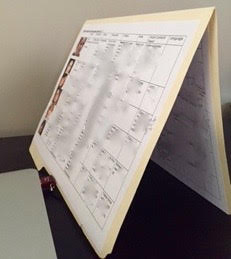
In addition to my character notebook, I created a cheat sheet chart and pasted it onto the front and back (and inside) of a file folder that I propped beside me while I wrote so I could *see* each character at a glance. But all of that wasn’t the hardest part. The hardest part was trying to fully realize each character on the page in as few words as possible. Let me tell you, I could’ve filled another hundred pages easy. Oh, the scenes I cut! The darlings I slayed! There’s one scene in particular between Zoe, the main character, and her best friend Liv that showed so much more of Liv, but I had to cut it. It still hurts. Certainly, beta readers were very helpful in letting me know whether I cut too much or too little. I’ve been gratified to see reviewers mention the diverse and developed cast. But phew, it wasn’t easy.
You had a previous career as a learning specialist. How does that knowledge you have impact your writing process and/or the work itself? (I bet your answer involves CHARTS! I know you love them!)
For my first graduate degree, I earned a masters in Learning Dis/Abilities. It was wonderful. I researched how children and teens learn, how they process information, how they communicate. I learned all kinds of methods for reaching all kinds of learners. As a writer, one of my favorite things is to think about the intersection of learning styles and writing process. (My dream one day is to offer a workshop on this—maybe even write a craft book. Wouldn’t that be so fun?)
As a result of my background and research, I don’t believe in writer’s block. I believe in stuck.
All learners get stuck. Frequently, this happens in school when there’s a mismatch between the teacher and student, when the material isn’t presented in a way the student can grasp. Good teachers know this and vary their presentation style. Savvy students recognize this and learn tricks to bridge that gap.
That’s how I approach my writing. When I get stuck, I switch up my approach. For me, my biggest go-to for getting unstuck is to get myself off the computer and onto the floor with a giant pad of paper and fat markers. I like making big flow charts, thought webs, drawings, and maps. I also like to walk around and talk to myself about a plot problem, dance to my work-in-progress playlist, or print out my book and walk around it. That’s because I know that being both kinesthetic and visual works for me. Understanding how you learn and how you process can be transformative for your writing process.
Sigh. I really want to teach that workshop.
I met you at VCFA’s Writing for Children and Young Adults MFA program. So, real talk. Was it worth it? What did you gain from an MFA program and why did you decide to go that route?
I will tell anyone who will listen that it was hands down the best professional decision I ever made. It was deeply, powerfully worth it…for me. That’s not to say it’s the right route for everyone. Certainly, there are plenty of talented and accomplished writers who never get an MFA—or even graduate from college. But I just wasn’t leveling up the way I wanted to on my own. I craved that formalized and dedicated study. I got that at VCFA. What I didn’t expect? The incredible community that came with it. I feel so so lucky that I got that experience.
What do you feel you’ve gained from being a part of the children’s writing community?
Several years ago, I was at the national SCBWI conference with a writer who typically writes for grown-ups. She looked around at the friendly bustle in that LA hotel in awe. “This doesn’t happen in the adult writing world.” She’s right, of course. While there are powerful friendships that develop between authors in the adult sphere, there doesn’t seem to be that baked-in commitment to lifting each other up that exists in the kidlit space. I’m so proud to be a part of a community that regularly celebrates and honors each other. Of course, we all benefit from this camaraderie, but that’s not why I’m proud. I’m proud that as a group who writes for children and teens, we should act as role models for how it can look to be successful and compassionate, ambitious and inclusive. In fact, the girls in Dangerous Play do a great job of that too.
What can Emma Kress fans look forward to? And where can they find you?
Awww, I’m a fan of all you readers and writers out there!
I’m busy revising what I hope will be my second book—also a contemporary stand-alone YA. Like Dangerous Play, you can expect it to be feminist, funny, and fierce. In the meantime, this month I’ll be hosting a free workshop for writers on writing with hope at the 1455 Summer Festival (sign up here: https://bit.ly/2Un9aMJ). On August 3rd, I’ll have a virtual launch with the great Nova Ren Suma along with several other launch events and writing workshops in the fall. (Keep updated here: https://www.emmakress.com/news-events). I offer a writing-focused newsletter every month (sign up here: https://www.emmakress.com/contact). I’m also very active on all my social media. Last November, I hosted 31 incredible authors for 15-minute craft-focused chats each day of NaNoWriMo and I plan to do that again this year. [Editors note: these chats are incredible! And you can find them on Emma’s IGTV page.] I love any opportunity to blend my love of teaching and writing! I look forward to connecting with all of you. Find me on social media:
- Twitter: https://twitter.com/emma_kress
- TikTok: https://www.tiktok.com/@emma_kress?lang=en
- Instagram: https://www.instagram.com/kress.emma/
- Facebook (professional): https://www.facebook.com/Emma-Kress-104816784920770
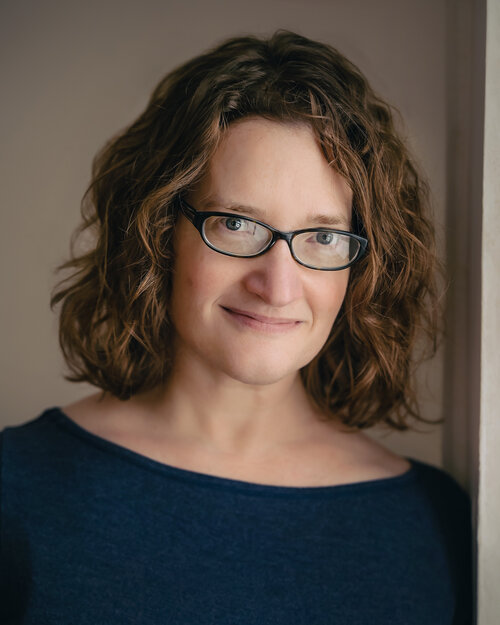
Emma Kress taught High School English in Central New York. She is a graduate of Vassar College, Columbia University’s Teachers College, and the Vermont College of Fine Arts’ Writing for Children and Young Adults MFA program. Before her teaching career, Emma worked at the Victim Services Agency (now known as Safe Horizon), the NYC Rape Treatment Consortium, and as a sexual violence peer counselor who also facilitated workshops on sexual assault and consent with teens. Now, she lives with her family in Saratoga Springs, NY. DANGEROUS PLAY is her debut novel, out August 3, 2021. [Editor’s note: You can pre-order today!]
Find more KidLit Craft interviews here!
Catching Up with Lindsay Lackey: A Debut Author’s First Year
Crafting Memorable Middle Grade Novels: A Q&A with Janae Marks
And sign up for our monthly newsletter here:
Anne-Marie Strohman (co-editor) writes picture books, middle grade novels, and young adult short stories and novels. She is trained as a teacher, an editor, and a scholar, specializing in Renaissance Literature. She holds an MFA in Writing for Children and Young Adults from Vermont College of Fine Arts and is an active member of SCBWI. Find her at amstrohman.com and on Twitter @amstrwriter.
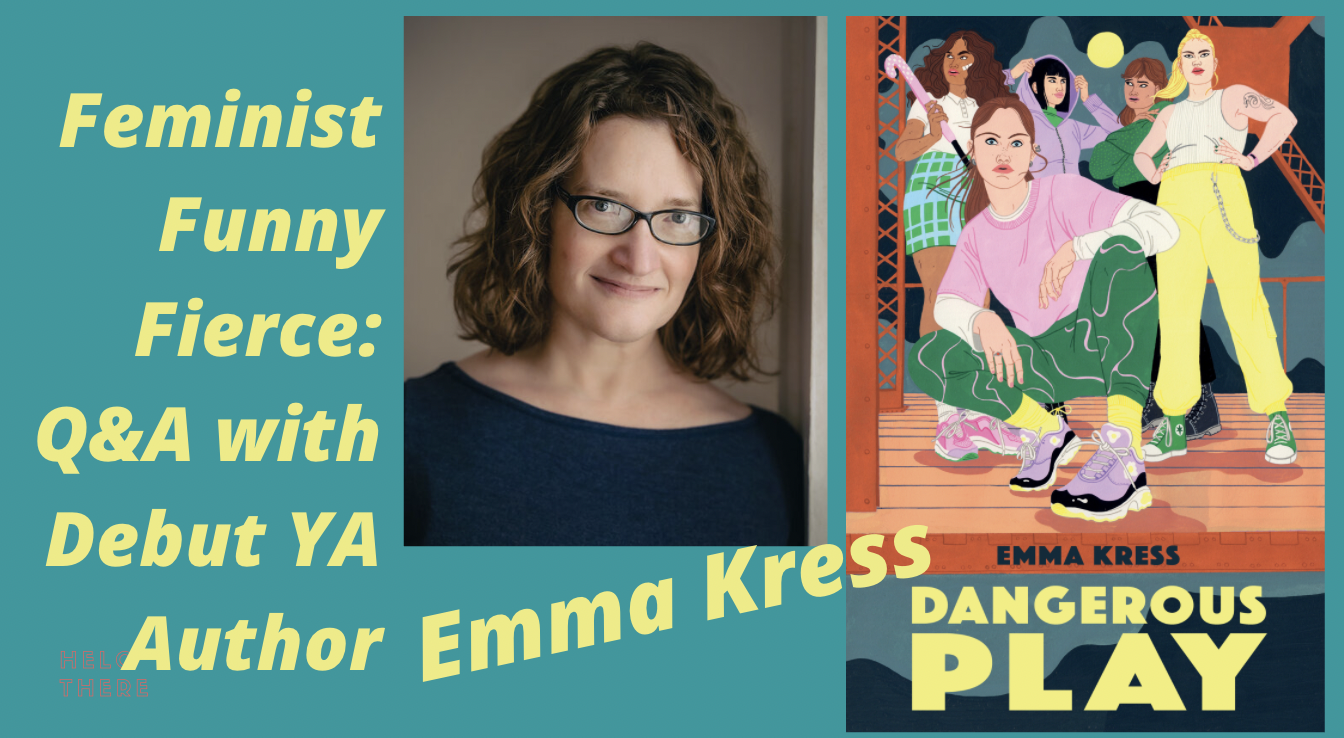
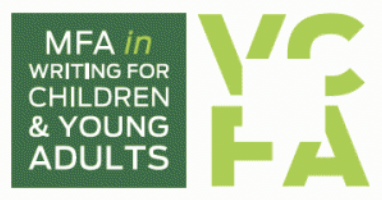
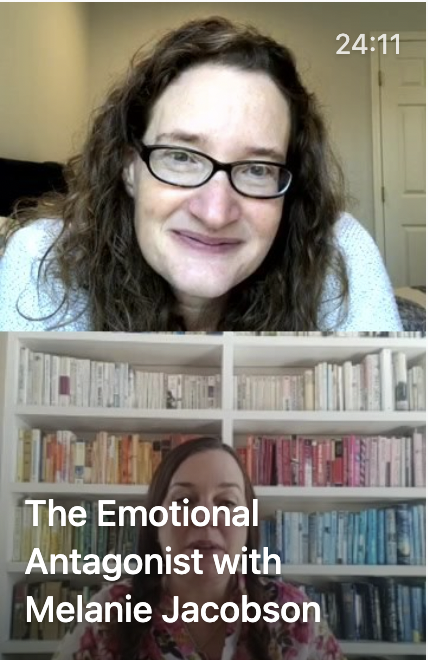

COMMENTs:
0